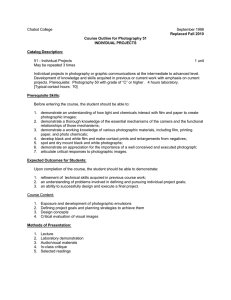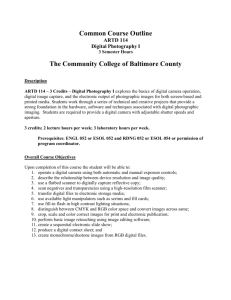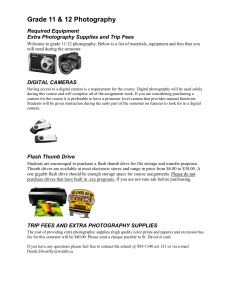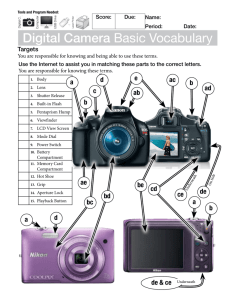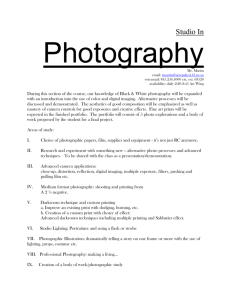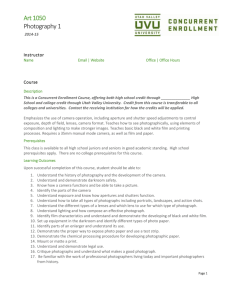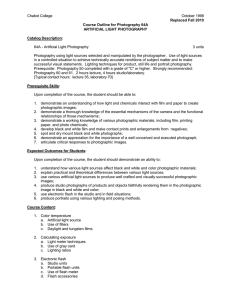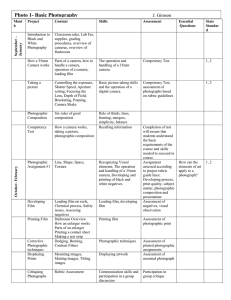Chabot College September 1998 50 - Introduction to Photography
advertisement
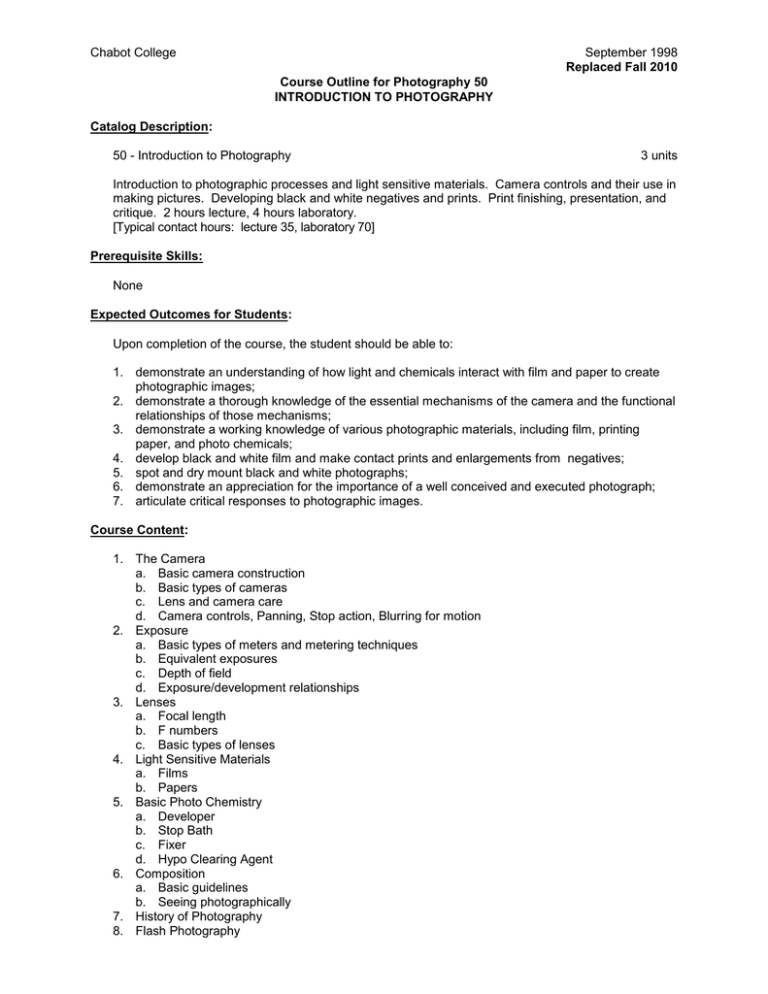
Chabot College September 1998 Replaced Fall 2010 Course Outline for Photography 50 INTRODUCTION TO PHOTOGRAPHY Catalog Description: 50 - Introduction to Photography 3 units Introduction to photographic processes and light sensitive materials. Camera controls and their use in making pictures. Developing black and white negatives and prints. Print finishing, presentation, and critique. 2 hours lecture, 4 hours laboratory. [Typical contact hours: lecture 35, laboratory 70] Prerequisite Skills: None Expected Outcomes for Students: Upon completion of the course, the student should be able to: 1. demonstrate an understanding of how light and chemicals interact with film and paper to create photographic images; 2. demonstrate a thorough knowledge of the essential mechanisms of the camera and the functional relationships of those mechanisms; 3. demonstrate a working knowledge of various photographic materials, including film, printing paper, and photo chemicals; 4. develop black and white film and make contact prints and enlargements from negatives; 5. spot and dry mount black and white photographs; 6. demonstrate an appreciation for the importance of a well conceived and executed photograph; 7. articulate critical responses to photographic images. Course Content: 1. The Camera a. Basic camera construction b. Basic types of cameras c. Lens and camera care d. Camera controls, Panning, Stop action, Blurring for motion 2. Exposure a. Basic types of meters and metering techniques b. Equivalent exposures c. Depth of field d. Exposure/development relationships 3. Lenses a. Focal length b. F numbers c. Basic types of lenses 4. Light Sensitive Materials a. Films b. Papers 5. Basic Photo Chemistry a. Developer b. Stop Bath c. Fixer d. Hypo Clearing Agent 6. Composition a. Basic guidelines b. Seeing photographically 7. History of Photography 8. Flash Photography Chabot College Course Outline for Photography 50, Page 2 September 1998 a. Electronic flash units b. Calculating flash exposure c. Flash accessories 9. Mounting and Presentation a. Print spotting b. Dry mounting c. Window mats Methods of Presentation: 1. 2. 3. 4. 5. Lecture Laboratory demonstration Audio/visual materials In-class critique Selected readings Methods of Evaluating Student Progress: 1. Written examinations 2. Critiques of photographs submitted Textbook(s) Typical: None Special Student Materials: Photographic supplies as required by instructor DL:GG:kh Photo 50 Revised: 12/15/98 gg

